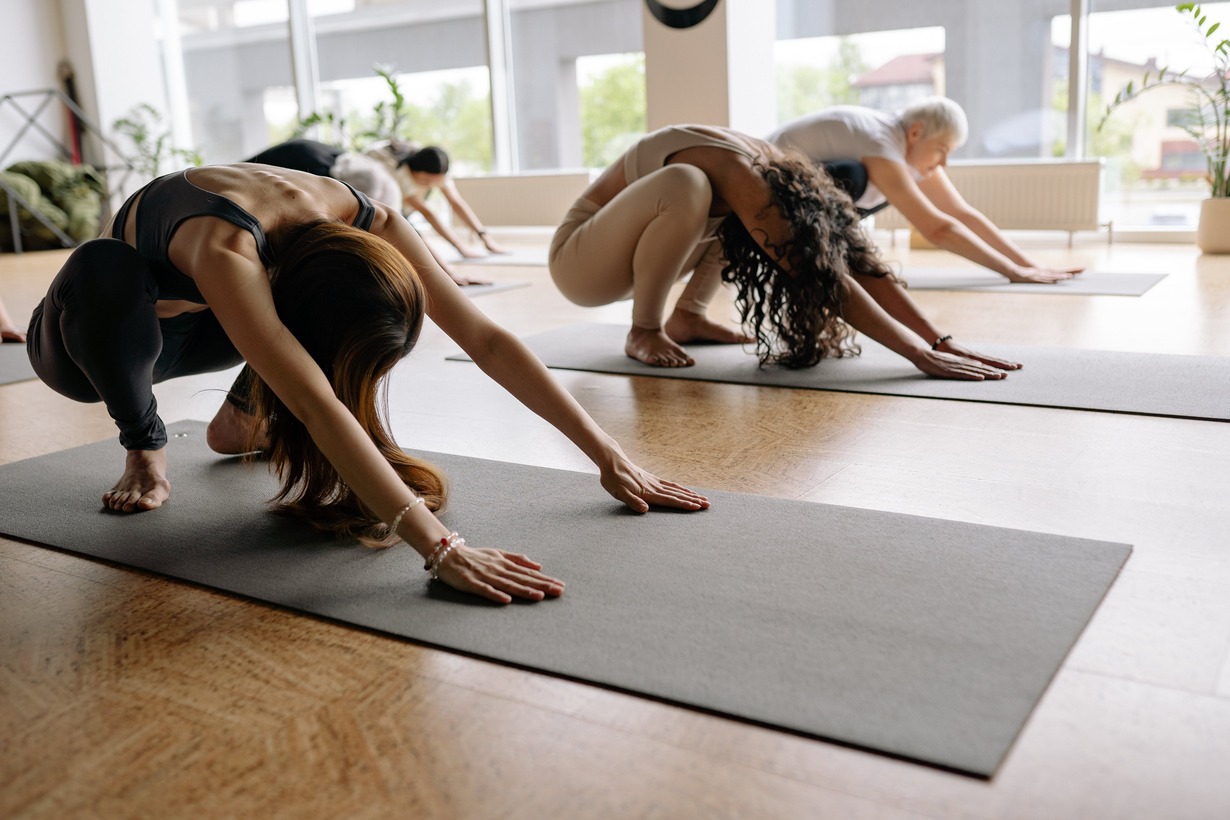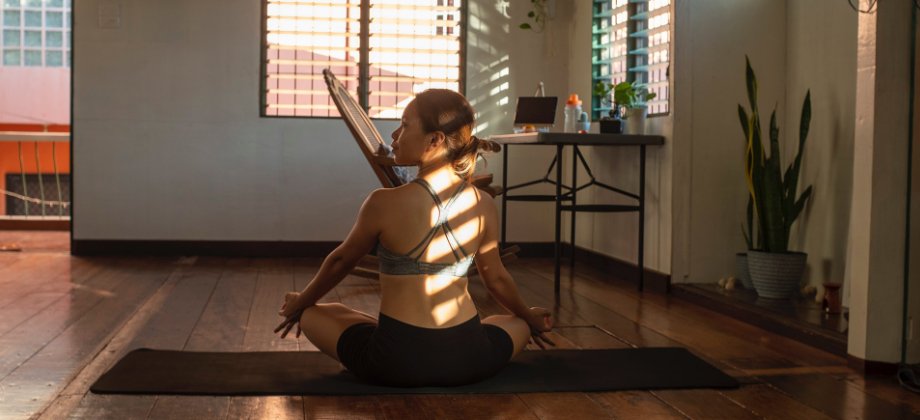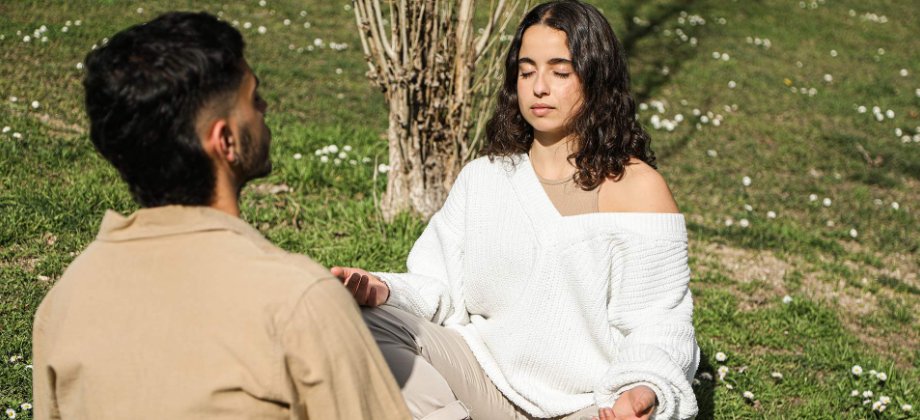
12 Tips for Handling Disruptions During Class
Yoga is a time for peace, calmness, and relaxation. A place where many stressed-out students come to unwind. Dealing with distractions can be tricky, especially in an environment that should be tranquil, but they’re bound to happen. Here are 12 valuable tips to help you maintain the serenity of your class and ensure a positive experience for all your students.
Establish Clear Class Rules
Yoga is becoming an increasingly popular hobby, with over 300 million people practicing it worldwide. A yoga class will likely have a diverse range of people with varying skill levels, experience, and preferences. Unfortunately, some may even be prone to disrupting the class.
Establishing clear class rules from the beginning is crucial to prevent disruptions before they occur. Share these requirements with your students at the start of each session, emphasizing the importance of silence, punctuality, and respecting each other’s space.
Setting expectations upfront can create a foundation for a peaceful practice environment.
Create a Calming Entry Ritual
Start your class with a calming entry ritual, like a few minutes of deep breathing, gentle stretching, or a brief meditation. A calm environment helps students transition from their busy lives into the yoga space, encourages mindfulness, and sets a peaceful tone for the class.
Gently Remind Latecomers
Tardiness can disrupt the class’s flow, so it’s essential to address the issue of latecomers diplomatically. Instead of scolding or embarrassing the student, quietly acknowledge their presence with a warm smile and gesture for them to set up their mat at the back of the class. Later, consider discussing the importance of punctuality privately.
Additionally, encourage students to let you know before class starts if they need to leave. You can suggest hand signals so students can let you know if they’re leaving the studio to go to the bathroom, grab a sip of water, or head out. This way, there doesn’t need to be any verbal disruptions that may distract the other students.
Deal With Noise Tactfully
Yoga studios can sometimes be noisy due to external sounds or loud neighboring classes. If external noise disrupts your class, calmly acknowledge it and suggest students use it as an opportunity to practice mindfulness by observing the sounds without judgment.
Physical noise can hinder communication, especially for your students whose hearing isn’t as strong as others. You can play soft, soothing music or use white noise to drown out external disruptions.
Stay Calm and Centered
Your demeanor plays a significant role in how disturbances affect your class. Remain calm and centered, even when facing challenging situations. Your composed presence will help reassure your students and maintain a peaceful atmosphere.
Carefully Deal With Emotions
Yoga sometimes causes students to release their emotions; most of the time, it’s OK. However, if the student appears visibly distressed, get everyone into a safe pose — like a child's pose — and approach the student. Don’t draw attention; deal with the matter empathetically and encourage deep breaths. If there appears to be more going on, it’s important to call for support.
Adjust Your Teaching Style
Flexibility in your teaching style can be helpful when dealing with disruptions. If you notice a particular approach or sequence is causing restlessness or discomfort in the class, be ready to adapt and change your plan to suit the energy needs of your students better.
Some disruptions may stem from students struggling with certain poses or feeling uncomfortable. Offer modifications or props to help students find ease and comfort in their practice. Doing so can reduce frustration and restlessness.
If you need to adjust a student physically, do so with mindfulness and respect for their personal space. Always ask for their permission and use a light, supportive touch. Remember — some students prefer you don’t touch them, so respect their boundaries.
Managing Digital Distractions
Allowing students to keep their phones nearby can be challenging in maintaining a distraction-free environment. Encourage them to turn their phones to silent mode before class begins and to put them inside their bags. Respond to the situation calmly and discreetly if a student’s phone rings or disrupts the class. Request that they step outside to attend to the call or message, emphasizing the importance of minimizing disruptions for the benefit of the other students.
If someone is an emergency contact, caring for someone sick, or needs to be available, encourage them to put their phone on vibrate and place it on their bag, or a sweat towel so not everybody has to listen to the vibration. If a student repeatedly breaks the no phone rule, speak with them privately.
Deal With Gigglers Gracefully
Giggling or laughter in a yoga class isn’t uncommon, and it can often be a sign of students letting go of tension and finding joy in their practice. Instead of scolding or discouraging laughter, embrace it with understanding and compassion. You can acknowledge the moment by saying something like, “I’m glad you’re enjoying class, but let’s take a few deep breaths and refocus.” This approach creates a positive atmosphere where students feel comfortable being themselves while maintaining the integrity of the class.
Stay Composed During Criticism
Handling criticism from students during a class can be challenging, as it disturbs the peaceful environment and affects the overall experience for everyone. It can also be a little awkward to receive negative feedback in the middle of teaching.
Take a deep breath, resist the urge to become defensive, and stay on course. Respond professionally and respectfully and suggest further addressing the matter after the session. Sometimes, feedback may be valid, and you should find ways to add their requests to your sessions, but it can really throw you off course.
Use Gentle Verbal Cues
When you notice a student struggling to stay still or making a noise, use gentle verbal cues to guide them back to the practice. For example, you can say, “Let’s all take a moment to find stillness within.”

Offer Private Assistance
If a student continues to disrupt the class despite your efforts, consider offering private assistance or guidance after the session. They might be dealing with personal issues that require more attention or a different approach to their practice.
Keep the Peace
As a yoga instructor, you hold the power to create a space of tranquility and mindfulness for your students. By implementing some measures and handling disruptions with grace and empathy, you can help students connect with the practice.






